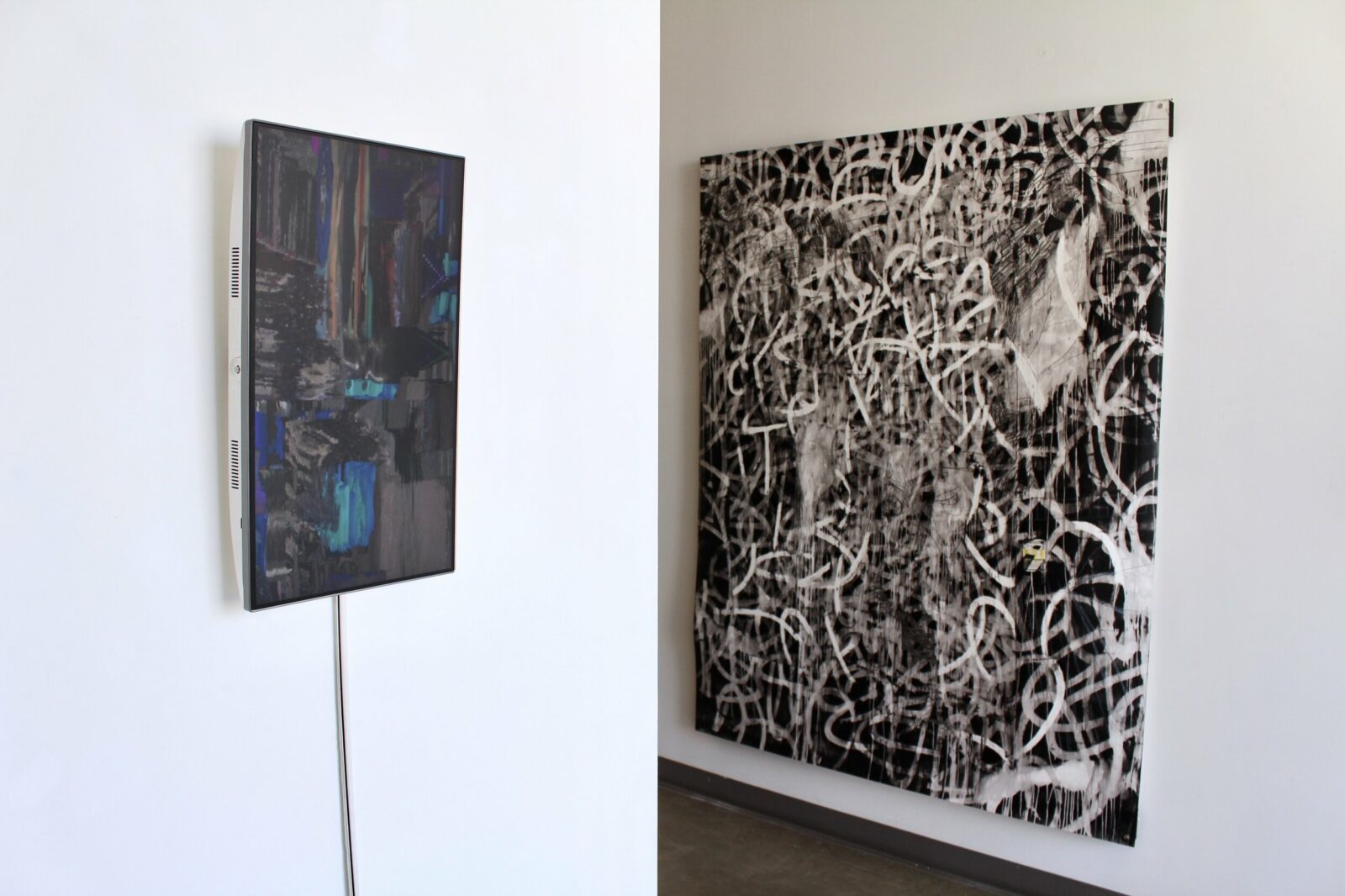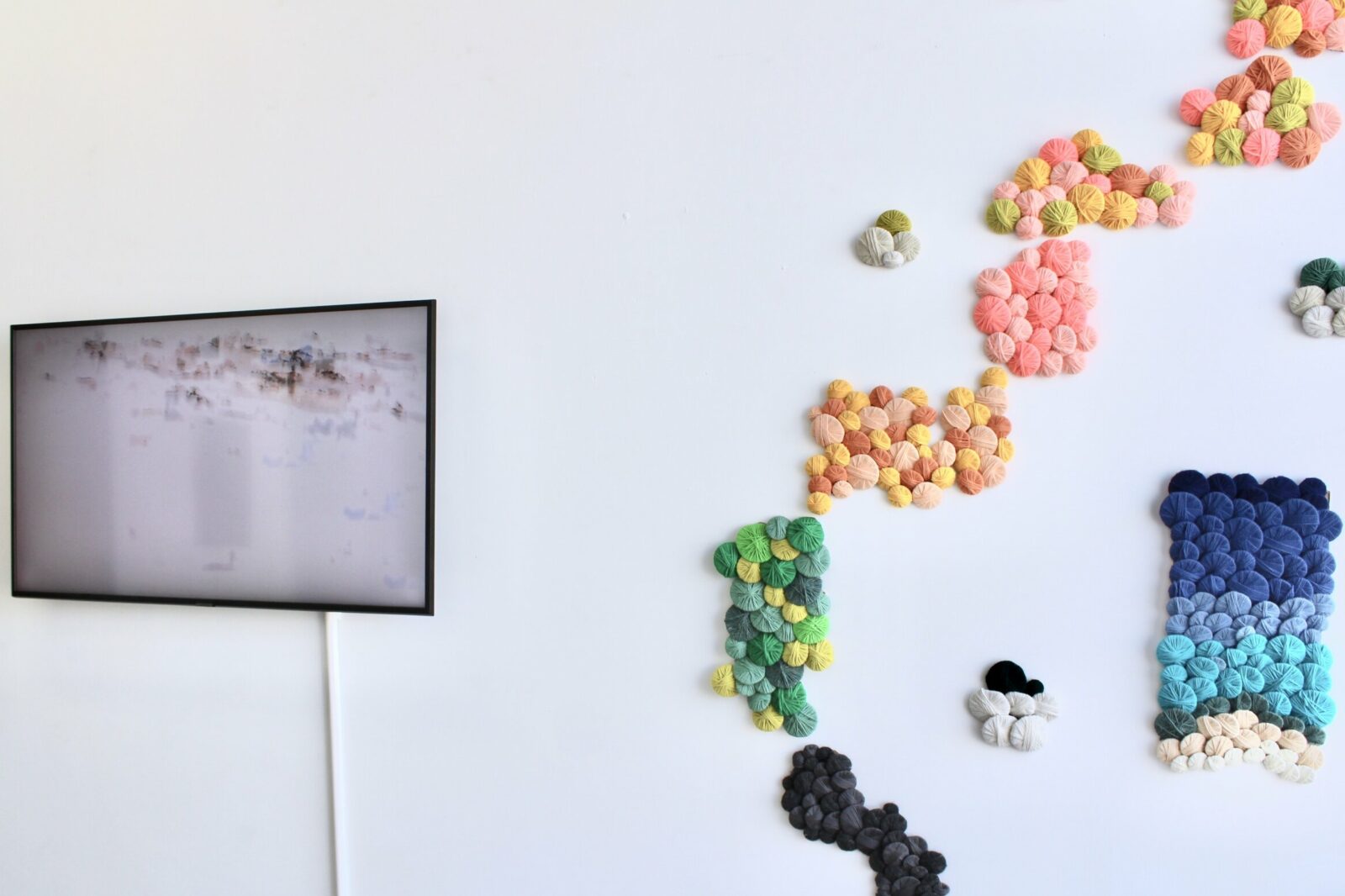Featured Artists: Taeyoon Kim, Dea Jenkins, Julian Lombardi, Ariel Maldonado, Hye Min Cho, Santiago Renteria.

The concept of emergence suggests that the whole is more than the sum of its parts. Behavior at a large scale arises from detailed structures, patterns, and relationships at a finer scale, bringing to light something new and distinct. The Emergent, characterized by its novelty and unpredictability, is a result of a process of self-organization through complexity. This exhibition presents works that explore such patterning to discover the emergent; a restored form that continues to unfold through varying media, including soft sculpture, video, watercolor, mixed-media, software, painting, and poetry.

To discover emergence, we must develop the capacity to shift perspective at different scales, to perceive the trees and the forest at the same time. Through holistic thinking, it reveals newfound outcomes, like cells to a body that work together to heal. This process is a natural and constant pursuit grounded in technology, biology, human systems, and relationships.
Drifters V2.01 is one work in a series by digital artist Tae-Yoon Kim featuring source videos that are shot, sampled, and collected in a customized filter distorting the contents. The processed videos are then sporadically generated on the screen. This work highlights both the processual and novel characteristics of emergence in both the real-time distortion of imagery and the final generated video.
Hye Min Cho is an artist utilizing custom graphic software to visualize the experiences at odds with the normal and legitimate. Her piece “Under a Red-black tree,” a time-based generative piece that is slowly changing, emerges from the application of a system of rules that analyzes a photograph of a tree as a source image. The piece is an invitation to take a distance away from our human-centric ways of seeing.
Dea Jenkins’ “Untitled” is a watercolor and ink painting on handmade pastel paper accompanied by the poem titled “Renaming Things.” The painting reveals a cell under a microscope, depicting an emergent process at a cellular level. Her practice involves repetitions of patterns found in cells which she translates in “Untitled” and embroidered textile piece, “Relic 2”. The “unfinished” nature of these works alludes to a constant pursuit and adaptation as singular parts function and fuse to make an ever-existing product of emergence. Her work embodies this evolution and communicates healing through which her practice is rooted. As she states in her poem:
The glory of a thing
Has yet to be revealed
But light will hit with rays golden
Shredding the seed
of unknowing innocence
Life bursting forth
like a fearsome stream.
Julian Lombardi’s substantial acrylic paintings in his ‘Machine Learning’ series reflect the mechanistic nature of emergence. It serves as a representation and inquiry of systems thinking in machines. Julian’s work is informed by his background in corporate finance where he explores the relationship between corporate culture and the creation/destruction of value through capitalism and financial systems.
Ariel Maldonado’s upcycled, soft sculptures in her “Quarantine Residency” series are composed of yarn and cardboard. Her practice focuses on the process and materials, their stand-alone functions, and how those work together. She experiments with computations and versions of use to create emergence, which results in abstract soft sculptures birthed from her time in quarantine. Her work is characterized by color, multiples, and an overwhelming of the senses by the reuse of collected and recycled materials.

Santiago Renteria is an artist and researcher working at the intersection of mathematics and generative arts. In his series ‘Art in Modulo N’ he explores the shape and color of modular arithmetics, a geometrization of the wrapping-around of finite number fields in emergent quasiperiodic patterns. The seven pieces represent a micro universe of a potentially infinite whole encoded in the underlying algorithm.
Writings: Naomi Stewart, edited by Maru García | Photo Credit: Richelle Gribble




